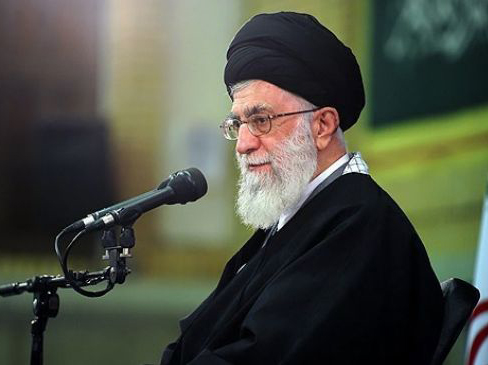I
N
an opinion piece last year, Henry Kissinger observed that over the next
couple of decades a nuclear war was likely to take place between India
and Pakistan. The nuclear factor was in play in four major and one minor
India-Pakistan crises: in 1987, 1990, 1998, 1999 and 2002.
I
n
1987, when an Indian army chief launched the Brasstacks military
exercises along Pakistan’s exposed desert borders, Pakistan responded by
deploying its forces in the north where India was vulnerable. Prime
minister Rajiv Gandhi’s agreement to a mutual stand-down no doubt also
took into account the informal threat from Islamabad to bomb India’s
nuclear reactors in case Pakistan was attacked. (After the crisis ended,
the Pakistan-India agreement not to attack each other’s nuclear
facilities was jointly formulated in one day.)
I
n January 1990,
when the anti-Indian insurgency erupted in Kashmir and India threatened
Pakistan, a conflict was forestalled by US intervention. The US acted
when it learnt that Pakistan had begun to arm its nuclear-capable
aircraft.
During
the night of 26-27 May 1998 — the night before Pakistan conducted its
nuclear explosions in response to India’s tests — Pakistani radar
detected unidentified aircraft flying towards its territory. Islamabad
issued warnings of instant retaliation to India and relayed these to the
US and Israel. This may have been a false alarm; but it illustrates the
danger of accidental conflict in the absence of real-time
communications.
During the 1999 Kargil war, the nuclear dimension
was implicit, given that the crisis occurred a year after the
India-Pakistan nuclear tests.
During the 2002 general mobilisation
by India and Pakistan, the director general of the Pakistan Armed
Forces Special Plans Division enunciated its nuclear ‘doctrine’ in a
news interview.
The
‘doctrine’ envisaged that Pakistan would use nuclear weapons if: it was
being militarily overwhelmed; its nuclear or strategic weapons or
facilities were attacked; and it was subjected to an enemy blockade.
The
projection of this doctrine, including at a UN news conference by this
writer in July 2002, sparked a fall in the Indian Stock Exchange, the
evacuation of foreign personnel and embassy families from New Delhi and a
demarche by Indian business leaders to prime minister Atal Behari
Vajpayee, and reportedly led to the Indian agreement for a mutual
drawback of forces.
The operation of mutual deterrence displayed in 2002, however, is being eroded by several developments.
One,
the conventional military balance is becoming progressively
unfavourable to Pakistan. India is engaged in a major arms build-up. It
is the world’s largest arms importer today. It is deploying advanced and
offensive land, air and sea weapons systems. Pakistan’s conventional
capabilities may not prove sufficient to deter or halt an Indian attack.
Two, India has adopted the Cold Start doctrine envisaging a rapid strike against Pakistan. This
would prevent Pakistan from mobilising its conventional defence and
thus lower the threshold at which Pakistan may have to rely on nuclear
deterrence.
Three, Pakistan has had to deploy over 150,000 troops
on the western border due to its involvement in the cross-border
counterterrorism campaign in Afghanistan, reducing its conventional
defence capacity against India.
Four,
the acquisition of foreign nuclear plants and fuel, made possible by
the Indo-US civilian nuclear cooperation agreement, will enable India to
enlarge its nuclear weapons stockpile significantly. To maintain
nuclear balance, Pakistan has accelerated production of fissile
materials. Both nuclear arsenals are now large and growing.
Five,
given its growing conventional disadvantage, and India’s pre-emptive
war fighting doctrine, Pakistan has been obliged to deploy a larger
number of nuclear-capable missiles, including so-called ‘theatre’ or
tactical nuclear-capable missiles. The nuclear ‘threshold’ is now much
lower.
Six, the Kashmir dispute — once
described by former US president Bill Clinton as a nuclear flashpoint —
continues to fester. Another insurgency is likely to erupt, certainly if
the Bharatiya Janata Party government goes ahead with its platform
promise to abrogate Article 370 of the Indian constitution (which
accords special status to Jammu & Kashmir). A renewed Kashmiri
insurgency will evoke Indian accusations against Pakistan and unleash
another Indo-Pakistan crisis.
Seven, Indian Prime Minister
Narendra Modi has obviously decided to adopt an aggressive posture
towards Pakistan, no doubt to appeal to his hard-line Hindu
constituency. The recent ceasefire violations along the Line of Control
are an ominous indication of such belligerency.
Eight, India is
reportedly involved in supporting the Tehreek-i-Taliban Pakistan and the
Baloch Liberation Army to destabilise Pakistan internally.
Nine,
India has terminated the ‘composite dialogue’ with Pakistan. Its
precondition for talks — an “absence of violence” — is impossible for
Pakistan to meet.
Ten, the US and other major powers evince little
interest in addressing the combustible mix of live disputes, terrorist
threats, conventional arms imbalance and nuclear weapons in South Asia.
During
the parallel dialogue initiated by the US with Pakistan and India
following their 1998 nuclear explosions, Pakistan proposed a ‘strategic
restraint regime’ with India which would include mechanisms to resolve
disputes, including Kashmir; preserve a conventional arms balance and
promote mutual nuclear and missile restraint.
I
ndia rejected the concept of a mutual restraint regime.
The
US at first agreed to consider Pakistan’s proposal. However, as their
talks with India transitioned from restricting India’s nuclear programme
to building a “strategic partnership” (against China), the Americans
de-hyphenated policy towards Pakistan and India, opened the doors to
building India’s conventional and nuclear capabilities and disavowed any
interest in the Kashmir dispute. Currently, Indian belligerence is
bolstered by US pressure on Pakistan to halt fissile material production
and reverse the deployment of theatre nuclear-capable missiles.
I
f
a South Asian Armageddon is to be prevented, it is essential to build a
structure of stable deterrence between India and Pakistan and find ways
to deal with Kashmir and other outstanding disputes. Reviving
consideration of a strategic restraint regime would be a good place to
start.
The writer is a former Pakistan ambassador to the UN.
Published in Dawn, October 26th, 2014




















